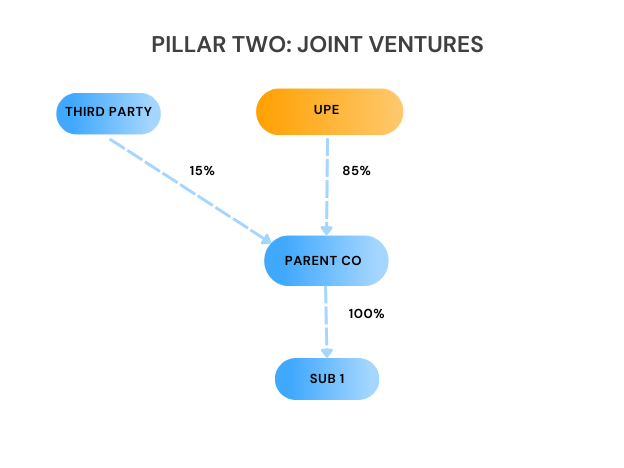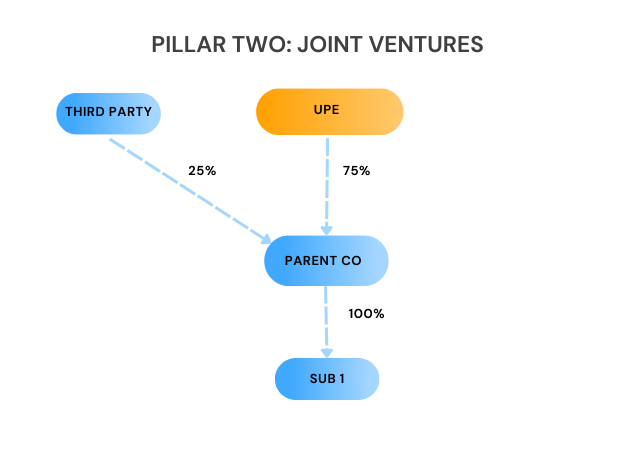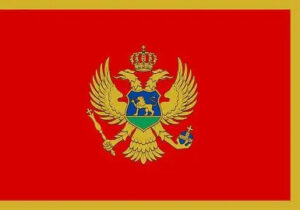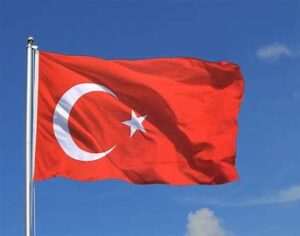
Ireland Extends Pillar 2 Registration Deadline
On December 18, 2025, the Irish Revenue issued Revenue eBrief No. 244/25 which provides for an extension in the Pillar 2 registration deadline to February 28, 2026 (from December 31, 2025).
1. Non-Consolidation
1.1 Overview of Accounting Treatment
1.2 Pillar Two – Non-Consolidated JVs
1.3 How the Pillar Two Rules Apply to JVs
2. Consolidated JVs
2.1 General Rule
2.2 Top-Up Tax
For accounting purposes, the key criterion is whether there is significant influence.
For instance, under IAS 28, it is presumed that if an investor controls 20%-50% of the voting rights of the JV that there is significant influence, but there can be cases where significant influence can apply even below this threshold (eg significant transactions between the entities or participation in board meetings etc).
Under accounting rules such entities are usually classed as ‘associates’.
Where there is significant influence, the interest in the JV is accounted for under the equity method and the results are not consolidated.
Essentially the initial investment is recorded at cost and then adjusted for the actual performance of the JV.
Note that there is still an impact on the consolidated accounts.
In the consolidated statement of profit or loss, dividend income received from the JV is replaced by bringing in one line that shows the parent’s share of the JV results immediately before the consolidated profit before tax.
If by contrast, the investor controlled the investee then the results of the investee would be consolidated on a line-by-line basis in the consolidated financial statements.
For Pillar Two purposes under the general rules, an MNE group’s share of the income of a JV that it did not control would not be brought into account as the JV is not consolidated on a line-by-line basis as is required by Article 1.2 of the OECD Model Rules.
Therefore, there is a separate rule for JVs.
Article 10 of the OECD Model Rules define a JV as an entity whose financial results are reported under the equity method in the Consolidated Financial Statements of the MNE Group provided that the UPE holds directly or indirectly at least 50% of its ownership interests.
Therefore, an associate that was accounted for under the equity method and where the UPE held less than 50% of the ownership interest would not be subject to the special JV rule.
For example, in a limited partnership, limited partners are not considered controlling if the general partner controls the investment, even if a limited partner owns a large share of the investment. For GloBE purposes, the income and tax items attributable to these would be excluded from the ETR calculation.
In addition, an excluded entity or a JV that is the UPE of an MNE group already within the Pillar Two rules are not classed as JVs for this purpose.
1. The JV and any of its subsidiaries are treated as a separate MNE group for Pillar Two purposes, and the JV is treated as the UPE, under Article 6.4.1(a) of the OECD Model Rules.
This means that for the purposes of jurisdictional blending the JV group income and covered tax is not included with other entities in the jurisdiction.
2. The JV itself does not apply the income inclusion rule or the under-taxed payments rule, under Article 6.4.1(b) of the OECD Model Rules.
The standard rules apply and the UPE or other parent entity would apply an IIR.
3. The UPE or parent entity is subject to top-up tax on its allocable share of the JV group under Article 6.4.1(c) of the OECD Model Rules.
This takes into account both direct and indirect holdings.
4. Where the allocable share is not fully accounted for under an IIR then any amount remaining is added to the total under-taxed payments rule amount, and then allocated to other constituent entities under the general rules.
If the interest in the investee is consolidated due to the investor exercising control, then the first step is that the general rules apply.
The Pillar Two rules use the consolidated financial statements and therefore the income and tax of the JV would be brought within the scope of the Pillar Two rules anyway.
Providing the UPE holds more than 30% in the JV the results are included along with other group entities for the purposes of jurisdictional blending.
If the UPE holds less than 30%, the JV is treated as a minority-owned entity and is a separate entity (or sub-group) for the ETR calculation.
Note that the imposition of top-up tax where a JV is consolidated can vary depending on the interest that the UPE holds in the JV.
If the UPE holds more than an 80% interest in the JV, the standard rules apply and the UPE of the group would account for top-up tax under an IIR (or other parent entity if the UPE did not apply an IIR).
If the UPE held less than an 80% interest in the JV the treatment depends on the group structure.
If the JV is a single entity held by the JV then the UPE would just apply an IIR.
However, if there was another parent entity, that would be classed as a partially owned parent entity (POPE).
The POPE then accounts for top-up tax in respect of its subsidiaries. The following examples illustrate this:

If Sub 1 was a low-taxed entity with top-up tax calculated at 1 million euros, the UPE would apply an IIR to its allocable share (85%). Therefore, it would account for top-up tax of 850,000 euros and the remaining 150,000 euros would be uncollected.
If, however, the group structure was:

The Parent Co would be a POPE as more than 20% of its ownership interest was held by non-group entities. As such, Parent Co would account for the 1 million euros top-up tax. The UPE would then reduce any top-up tax by the 1 million euros that the POPE accounted for.
The treatment of joint ventures (JVs) under the Pillar Two rules depends on whether the interest in the JV is consolidated on a line-by-line basis in the consolidated accounts. If it is, the general rules apply. If not, special rules apply to treat the JV separately from other jurisdictional entities.
Joint Ventures (JVs) that aren’t consolidated are treated as follows:
1. The JV and any of its subsidiaries are treated as a separate MNE group for Pillar Two purposes, and the JV is treated as the UPE, under Article 6.4.1(a) of the OECD Model Rules.
This means that for the purposes of jurisdictional blending the JV group income and covered tax is not included with other entities in the jurisdiction.
2. The JV itself does not apply the income inclusion rule or the under-taxed payments rule, under Article 6.4.1(b) of the OECD Model Rules.
The standard rules apply and the UPE or other parent entity would apply an IIR.
3. The UPE or parent entity is subject to top-up tax on its allocable share of the JV group under Article 6.4.1(c) of the OECD Model Rules.
This takes into account both direct and indirect holdings.

On December 18, 2025, the Irish Revenue issued Revenue eBrief No. 244/25 which provides for an extension in the Pillar 2 registration deadline to February 28, 2026 (from December 31, 2025).

On December 19, 2025, the Luxembourg Official Gazette published:
– a law to amend its Minimum Tax Law to provide for the January 2025 OECD Administrative Guidance and the EU DAC 9 GIR filing requirements: and
– a Grand Ducal Regulation which includes the format of the GIR

On December 19, 2025, SARS issued further guidance on the Pillar 2 registration process.

Order No. 158/2025 XXV issued on December 12, 2025 provides that for constituent entities whose fiscal year ended between December 31, 2024 and March 31, 2025 the filing deadline for Form 62 (the Pillar 2 Registration Form) is the last day of the 15th month following the end of that fiscal year.

On December 16, 2025, The Netherlands Parliament approved the Second Amendment to the Minimum Tax Act to implement the December 2023, June 2024 and January 2025 OECD Administrative Guidance.

On December 10, 2025, Law No. SFS 2025:1461 to amend the Global Minimum Tax Act was published in the Swedish Official Gazette. The purpose of the law is to implement the provisions of the June 2024 OECD Administrative Guidance into domestic law.

On November 25, 2025, the Finnish Tax Administration published guidance on the allocation of profits/losses and taxes between group entities to take account of the June 2024 OECD Administrative Guidance.

On November 26, 2025, Montenegro issued a Draft Law to apply a domestic minimum top-up tax (DMTT) from January 1, 2026.

On December 1, 2025, Turkey announced an extension in the filing and payment date for the QDMTT return and the opening of a test environment for the submission of the QDMTT return.
| Cookie | Duration | Description |
|---|---|---|
| cookielawinfo-checkbox-analytics | 11 months | This cookie is set by GDPR Cookie Consent plugin. The cookie is used to store the user consent for the cookies in the category "Analytics". |
| cookielawinfo-checkbox-functional | 11 months | The cookie is set by GDPR cookie consent to record the user consent for the cookies in the category "Functional". |
| cookielawinfo-checkbox-necessary | 11 months | This cookie is set by GDPR Cookie Consent plugin. The cookies is used to store the user consent for the cookies in the category "Necessary". |
| cookielawinfo-checkbox-others | 11 months | This cookie is set by GDPR Cookie Consent plugin. The cookie is used to store the user consent for the cookies in the category "Other. |
| cookielawinfo-checkbox-performance | 11 months | This cookie is set by GDPR Cookie Consent plugin. The cookie is used to store the user consent for the cookies in the category "Performance". |
| viewed_cookie_policy | 11 months | The cookie is set by the GDPR Cookie Consent plugin and is used to store whether or not user has consented to the use of cookies. It does not store any personal data. |